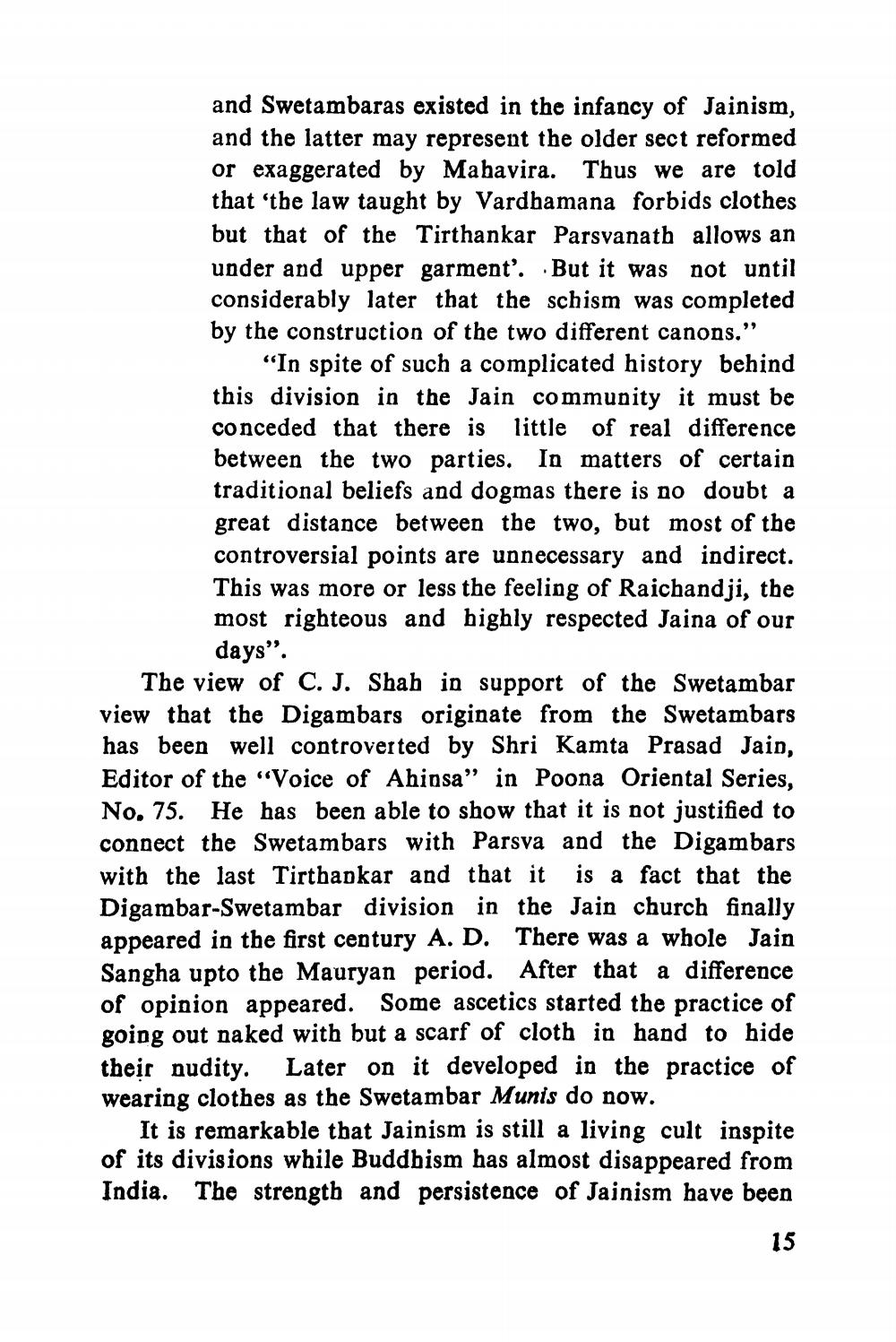________________
and Swetambaras existed in the infancy of Jainism, and the latter may represent the older sect reformed or exaggerated by Mahavira. Thus we are told that 'the law taught by Vardhamana forbids clothes but that of the Tirthankar Parsvanath allows an under and upper garment. But it was not until considerably later that the schism was completed by the construction of the two different canons."
"In spite of such a complicated history behind this division in the Jain community it must be conceded that there is little of real difference between the two parties. In matters of certain traditional beliefs and dogmas there is no doubt a
stance between the two, but most of the controversial points are unnecessary and indirect. This was more or less the feeling of Raichandji, the most righteous and highly respected Jaina of our
days". The view of C. J. Shah in support of the Swetambar view that the Digambars originate from the Swetambars has been well controverted by Shri Kamta Prasad Jain, Editor of the “Voice of Ahinsa" in Poona Oriental Series, No. 75. He has been able to show that it is not justified to connect the Swetambars with Parsva and the Digambars with the last Tirthadkar and that it is a fact that the Digambar-Swetambar division in the Jain church finally appeared in the first century A. D. There was a whole Jain Sangha upto the Mauryan period. After that a difference of opinion appeared. Some ascetics started the practice of going out naked with but a scarf of cloth in hand to hide their nudity. Later on it developed in the practice of wearing clothes as the Swetambar Munis do now.
It is remarkable that Jainism is still a living cult inspite of its divisions while Buddhism has almost disappeared from India. The strength and persistence of Jainism have been
15




